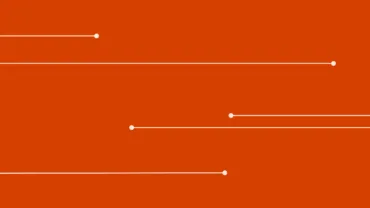The COVID-19 pandemic has taken a toll on the world — and it’s not done yet. But if anything positive can be said of the pandemic, it’s how adaptable humankind has proven to be.
Businesses everywhere, from financial institutions to restaurants, have adopted new ways of working and reimagined their operations. Ingenuity and persistence have gotten us this far, but we’re not out of the woods. Uncertainty around vaccine deployment and public acceptance, as well as economic stability, remains high.
While the U.S. Congress has been debating the stimulus package extension since August, there are currently two competing plans vying for support from federal lawmakers.
Two stimulus package proposals
As of December 4, 2020, the two proposals for stimulus package extension include:
- A $908 billion stimulus plan proposed by a bipartisan Congressional group
- A $500 billion stimulus plan proposed by Mitch McConnell
Despite the difference in size between these two proposals, there is hope that an agreement can happen by the end of 2020 — particularly by the last day of the session, December 11. All parties have agreed to work nights and weekends until an agreement comes to fruition.
When these debates began, the outlook of an agreement before Joe Biden’s January 20, 2021 inauguration was bleak. Now there is more optimism. But a deal doesn’t mean the saga is over. In fact, an eventual bill may only provide an extension of services into the new year, with a minimum extension of January 31, 2021 (under the $500 billion plan) and the maximum extension of April 30, 2021 (under the $908 billion plan).
However, what financial institutions and FinTechs should be paying attention to is the amount of small business funding issued with these stimulus extensions.
Small business funding
If a bill is passed, the amount of small business funding through the Payroll Protection Program (PPP), Economic Disaster Relief Funding, and other small business programs is projected to range from $288 billion to $332.7 billion.
This funding release is pertinent for financial institutions as applications could start rolling in as early as December 25. This potential funding release leaves little time to ramp up anti-fraud measures, let alone to sharpen focus on crucial fraud attributes for these systems to prevent the amount of fraud that could be committed.
Small business funding fraud statistics:
- $535 billion approved loans to 5.2 million small businesses
- Over $4 billion of these loans are red-flagged
- National Center for Disaster Fraud (NCDF/DOJ)
- Over 57 People Charged
- Over $175 MM from Payroll Protection Program
- Over $70 MM in Government Losses
- Office of Inspector General
- Enforcement Actions: 24 and counting
- Convictions: 291 Individuals (76 bankers) and counting
What are some key indicators financial institutions should be looking for going into this next round of funding?
Twelve key fraud indicators:
- Receipt of payment when not in the affected area
- Receipt of payment in an individual account
- Receipt of payment for the benefit of a name not on account
- Receipt of payment for ineligible/synthetic businesses
- Lack of information in public records sources can be powerful
- Synthetic IDs, thin files, and newly established/re-established businesses
- High-risk businesses such as money service businesses and third-party payment processors
- Shared address, bank account, email, or IP address
- Fictitious/inactive businesses
- Business not registered as of 2/15/2020
- Businesses/principals in bankruptcy or Systems of Awards Management list
- Felony or financial crime charges of owners (20%+ Interest)
Not only are the small business loan fraud numbers increasing, but unemployment insurance fraud is skyrocketing.
Unemployment insurance fraud
In September alone, $100 million was issued to the states by the Department of Labor for unemployment insurance fraud investigations. Some unemployment fraud indicators can be found below.
- Continuing to collect after returning to work
- Multiple unemployment benefit receipts for various individuals using a common account
- Receipt of unemployment from multiple states
- Synthetic/stolen, inmate, deceased, or out of state identities
- Fictitious/inactive businesses hiring/laying off employees (i.e., two-sided schemes)
- Rules to detect receipt of unemployment and payroll receipt in tandem (i.e., collusive patterns)
Unfortunately, a spike in disaster fraud is not the only problem awaiting us in 2021. A recap of the items to pay attention to in 2021 are listed below:
- Re-examining remote security protocols and plans
- Business continuity planning
- Investing in mobile platform stability and security
- Addressing any backlogs in compliance reporting
- Shoring up systems to catch sophisticated disaster fraudsters (along with fraud spikes domestically)
- Considering strategic investments
Overall, it is time for financial institutions to gear up for the potential fraud that will accompany this next wave of small business loan funding. Know your customers, and work closely with law enforcement to identify patterns as a means to protect your P+L.










